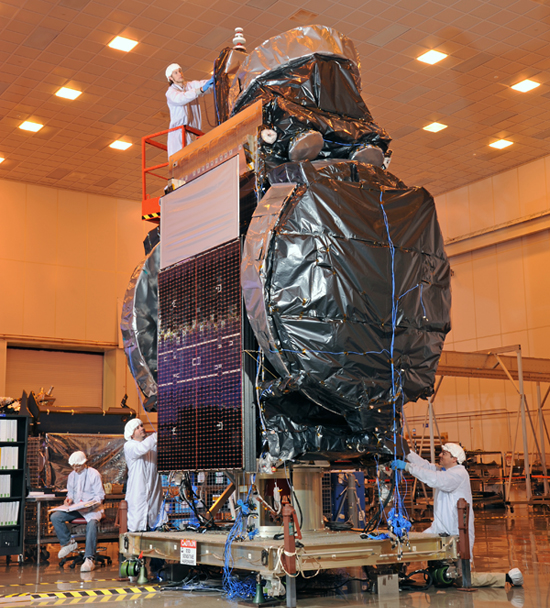Star One C3 Communications Satellite Launched

Orbital Sciences Corporation, one of the world’s leading space technology companies, today announced the Star One C3 communications satellite, built by the company for Star One S.A., was successfully launched into orbit on Saturday, November 10 aboard an Ariane 5 rocket from Kourou, French Guiana. Over the next several weeks, Orbital will work with Star One’s engineering team to conduct in-orbit testing to verify all the spacecraft systems are functioning properly before it is officially turned over to Star One for full operational control and commencement of commercial service.
“We are early in the initial check-out and testing process and the Star One C3 mission is proceeding smoothly,” said Mr. Christopher Richmond, Orbital’s Senior Vice President of Communications Satellite Programs. “This is the first GEOStar satellite we have built for Star One and we are proud to be a part of their team, helping increase communications capacity to meet the rapidly growing demand for telecommunications services in Latin America.”
About the Star One C3 Satellite
Orbital designed, built and tested the Star One C3 satellite in Dulles, VA at its satellite manufacturing and test facility. It incorporates a hybrid payload comprised of 28 active C-band transponders for coverage of South America, and 16 x 72 MHz Ku-band transponders with six switchable channels between Brazil and the Andean coverage region. The spacecraft, based on Orbital’s flight-proven GEOStarTM platform, will generate approximately 5.0 kilowatts of electrical payload power. The Star One C3 satellite is designed and fueled for a service life of 16 years. Its geosynchronous location will be at 75 degrees West longitude, and is also capable of operating from 84 degrees West longitude if required.
About Orbital’s GEOStar Satellite Platform
Orbital’s highly successful communications satellites are based on the company’s GEOStar satellite platform, which is able to accommodate all types of commercial communications payloads. The GEOStar design is optimized for satellite missions requiring up to 7.5 kilowatts of payload power. In most instances, the affordable GEOStar satellite can be built and delivered in 24 months or less. The GEOStar platform can also host separate government-sponsored payloads that take advantage of the satellite’s spare mass, power and communications capacity, as well as its quick launch schedule and demonstrated record of in-orbit reliability.
